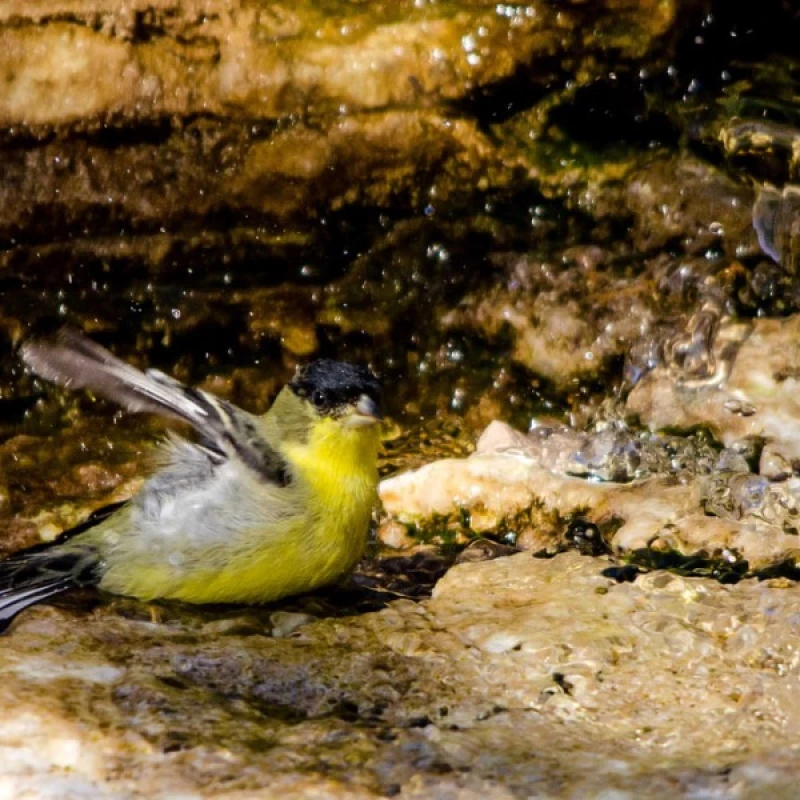What can birds teach us about drought? Birds connect us to water in our community, and that connection is vital as we live through the 23rd year of drought in Las Vegas. At every March birding event, Red Rock Audubon will share water conservation facts, tips, and resources from the Southern Nevada Water Authority with the public.
Water is central to all of Red Rock Audubon’s birding locations, from Sunset Park to the Henderson Bird Viewing Preserve. It’s no surprise to birders that aquatic birds thrive in Las Vegas, where urban ponds and wetlands provide water, food, and shelter. But many people, including lifelong Las Vegas residents, are shocked to learn that the city has so many iconic birds like great egrets, pelicans, and great blue herons.
These birds teach us how important water conservation is in Las Vegas because they rely on our city’s unique water recycling program for their habitat. 99% of indoor water is recycled back into Lake Mead, flowing through the Las Vegas Wash after it is treated. However, outdoor water like sprinklers and leaky drip lines is not recycled. Two ways people can help water conservation is by making sure they’re only watering on the SNWA’s schedule and fixing any leaks. This ensures that water is not wasted, because wasted water never returns to Lake Mead. And water that doesn’t return to Lake Mead doesn’t flow back into our homes or bird habitats.
It’s not only aquatic birds who teach us about the drought. Many desert birds have unique adaptations to cope with scarce water and searing summers. Greater roadrunners secrete excess salt from a gland near their eye to conserve water instead of urinating. Verdins, a type of small songbird, get all of their water from the insects and fruit they eat as they flit through mesquites and willow trees. These adaptations teach us that water isn’t just a feature of ponds and wetlands, but a life force that flows through all parts of our urban environment.
Another way people can help birds and water conservation further is by replacing lawns with native desert plants. Even the hardiest birds are struggling to find sufficient water in the drought. Providing habitat will not only bring more birds into your life, but help desert birds find the food they need to thrive in the drought. The SNWA even offers rebates for replacing lawn with desert landscaping and has a search tool to find the best desert plants that will work for you.
Another way people can help birds and water conservation further is by replacing lawns with native desert plants. Even the hardiest birds are struggling to find sufficient water in the drought. Providing habitat will not only bring more birds into your life, but help desert birds find the food they need to thrive in the drought. The SNWA even offers rebates for replacing lawn with desert landscaping and has a search tool to find the best desert plants that will work for you.
The drought is here to stay, so we must adapt for our community. Everyone can do their part, and talking about water conservation with friends, family, and neighbors is a great way to start. At Red Rock Audubon, we let our avian neighbors begin the conversation for us. Come to a birding event to learn more about birds and water conservation. Invite your friends and family! You never know what you might see.










